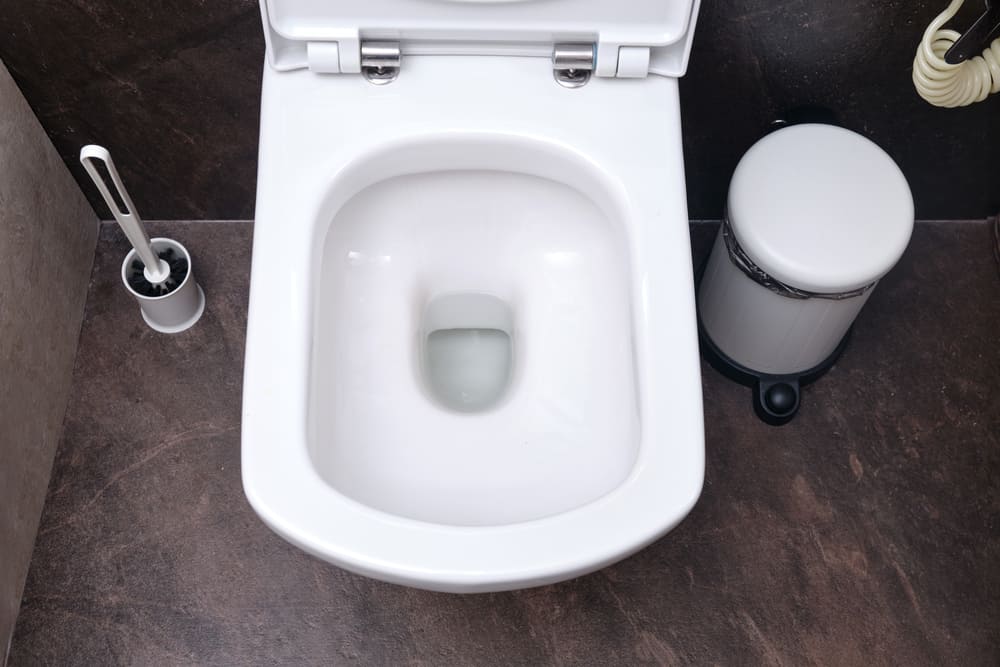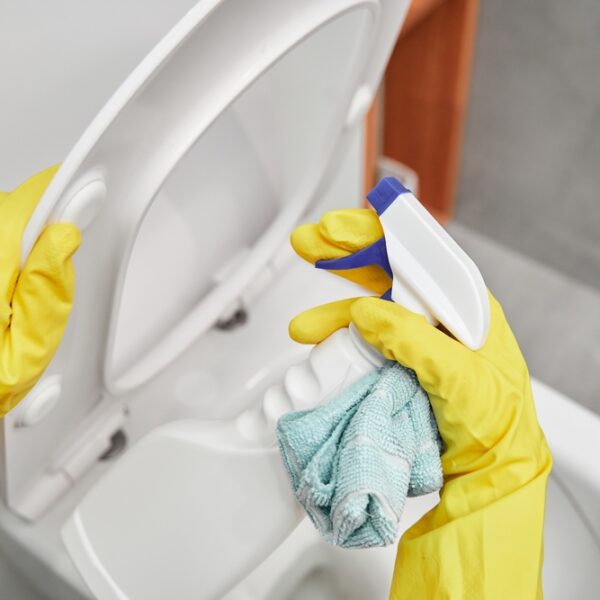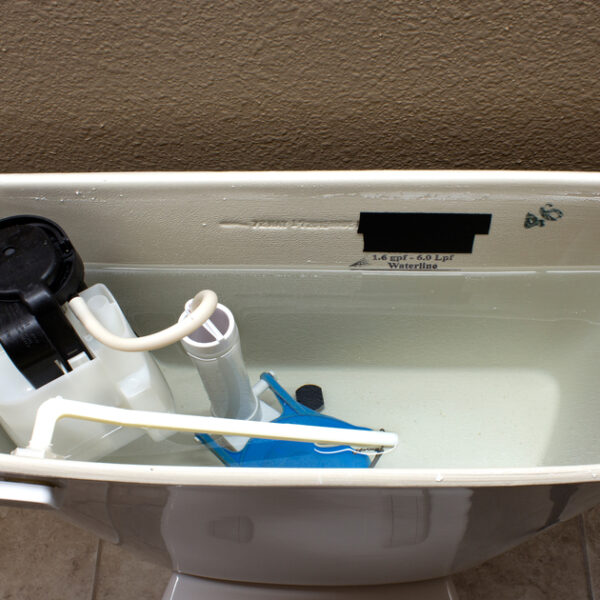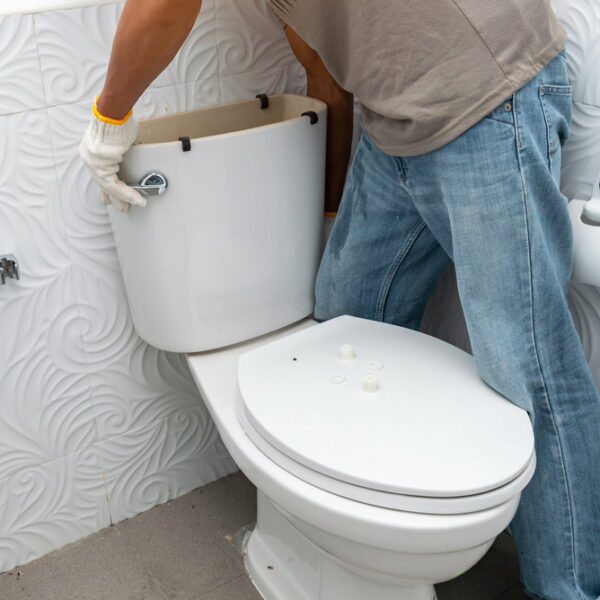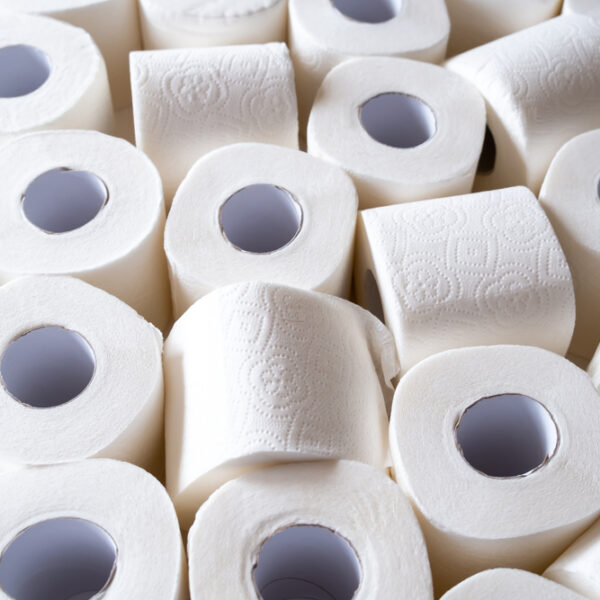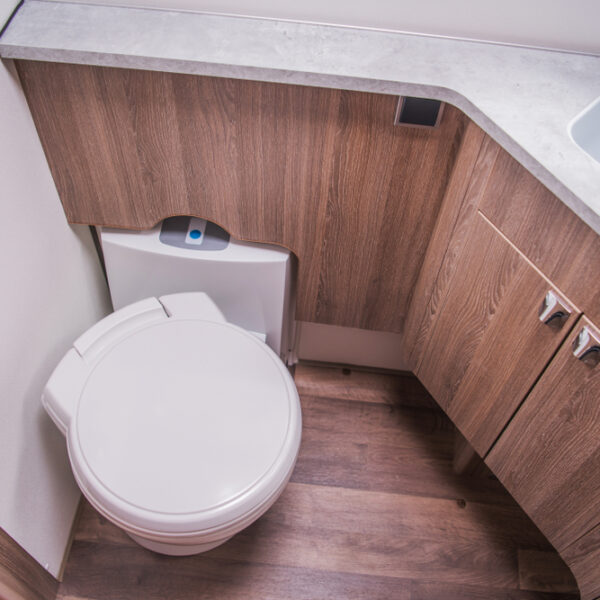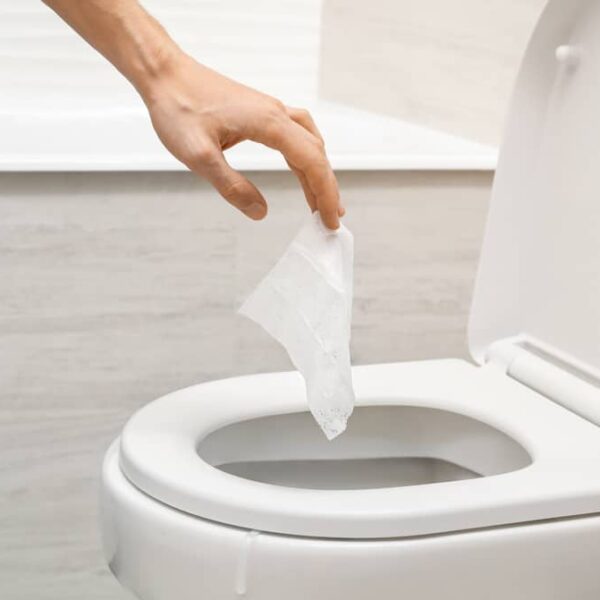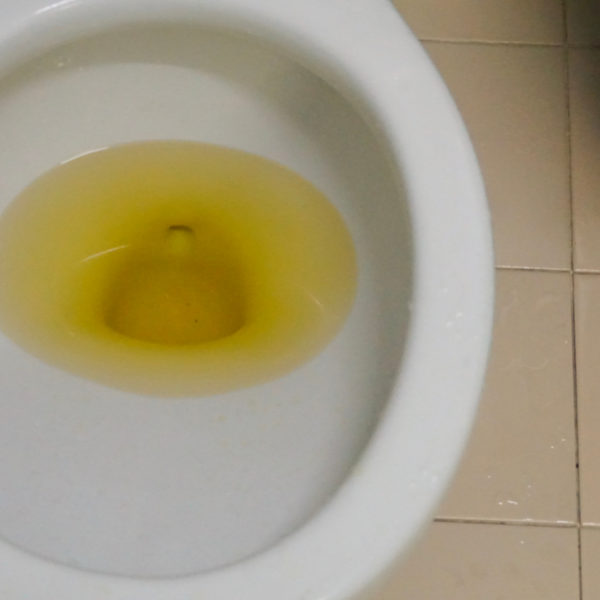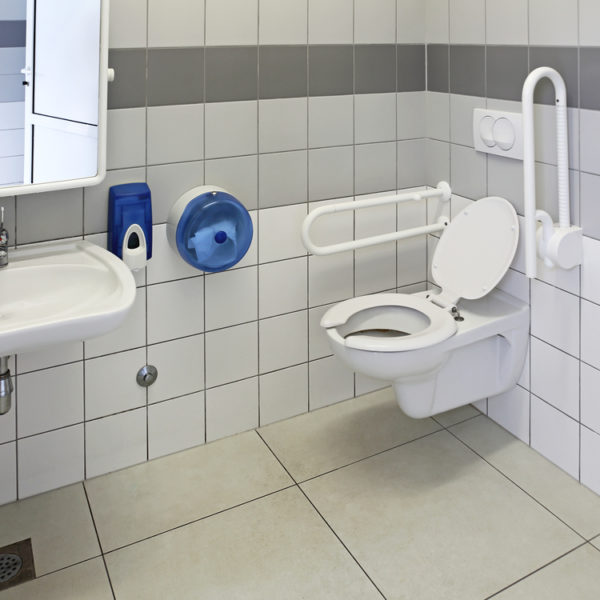Have you noticed an unpleasant-looking stain beginning to form at the bottom of your toilet? And is it particularly stubborn, resisting all your efforts to shift it with a toilet brush? Then you’re probably not alone.
It’s quite normal for ugly stains to develop in the bottom of a toilet, but the good news is that they’re not too hard to shift. And to give you all the info about what to do, here we discuss how to clean the hole in the bottom of a toilet so you can quickly get it looking like new again.
Where do those stains come from?
The first thing we need to think about before we talk about how to get rid of the stains at the bottom of your toilet is where they come from – because that will help us decide how to tackle them.
The good news is that while those brown, black or gray stains in your toilet bowl may look pretty gross, they’re probably not as bad as you might imagine.
In fact, stubborn stains in the bottom of your toilet are most likely due to hard water deposits rather than anything nastier.
When water falls from the sky as rain, it’s pure and free of any minerals, but then when it passes through rocks like limestone on the way to our water supplies, it picks up minerals like calcium and manganese and so becomes hard.
Then, when we use this hard water, it can leave limescale deposits in fixtures in bathrooms like our showerheads – and also in the bottom of our toilets.
This is what causes the stains in the bottom of our toilet bowls – so now let’s think about what we can use to tackle these stains.
Some cleaners that can get rid of mineral deposits
Here are a few cleaning products you can use to tackle hard water stains in your toilet and elsewhere in your home.
Vinegar
Vinegar is a well-known cleaner that can be used for a whole range of household chores – including cleaning the hole in your toilet.
This is because it contains acetic acid, a mild acid that is harmless to us and the environment but that is still strong enough to help get things clean.
It is particularly effective against mineral buildups since its acidic properties attack the alkaline minerals, breaking them down and making them easy to clean off.
You should use cleaning-grade white vinegar since it’s inexpensive and easy to find. You can also use food-grade vinegar, but it’s more expensive – it’s a bit of a waste to literally pour it down the toilet.
Lemon juice
Lemon juice contains citric acid, so it has similar cleaning properties to vinegar. An advantage it has over vinegar is that it has a naturally pleasant odor rather than vinegar’s pungent pong.
However, using lemon juice is more expensive than using white vinegar, so that will put some people off.
Bicarbonate of soda
Bicarbonate of soda is another near-magical cleaner that can be used for many jobs, and shifting mineral deposits from your toilet bowl is one of them.
It’s also known as baking soda, but you should buy the cleaning-grade version rather than the food-grade type since it’s far cheaper.
Coca-Cola
Coca-Cola – or any generic brand of cola – can also be used for many cleaning and unblocking jobs due to its acid content and carbonation.
It’s worth a go if you have nothing else to hand, but we recommend trying other techniques first since Coke is less effective than something like vinegar and is also more expensive.
Acidic toilet bowl cleaner
If you want to call in the big guns, you can head to the store and pick up some dedicated acidic toilet bowl cleaner.
This is sure to shift your stains, but this type of product usually contains much stronger acid like hydrochloric acid, so it’s more harmful to the environment, and it will also harm your skin or eyes if you get any on you.
For these reasons, we advise against using harsh chemicals like this unless there’s no other choice.
How to clean mineral deposits from the bottom of the toilet bowl
You can experiment with some of the different products we’ve mentioned above, but our recommendation is to use a combination of bicarbonate of soda and white vinegar. It’s a tried and tested method that really works, and it won’t harm the environment either.
Here’s how it’s done:
What you’ll need:
- White vinegar
- Bicarbonate of soda
- Toilet brush
- Cup or ladle
- Old towel or sponge
How to do it:
- Empty the toilet bowl
To start, you’ll need to remove all the water from the toilet bowl. To do this, you can simply scoop it out with a cup or a ladle and then soak up whatever remains with a towel or sponge.
- Pour vinegar into the bowl
Next, pour the white vinegar into the bowl. If you can, use enough to fill the toilet up to the same level as when it is filled with water.
- Add bicarbonate of soda
Add two cups of bicarbonate of soda. At this point, the whole mixture will start fizzing quite vigorously. Leave it to act for at least half an hour – or longer if possible.
- Scrub with a brush
After the vinegar and bicarbonate of soda mixture has been left to act and the fizzing has stopped, use your regular toilet brush to give the bottom of the bowl a good scrub. You should be able to see that most of the deposit has been removed.
Pro tip: Avoid scrubbing with an abrasive brush or anything like sandpaper or pumice stone. While these things may help remove the stain, they will also damage the porcelain of your toilet, making it easier for mineral deposits to build up in the future.
- Flush and inspect
Flush the toilet to clear the vinegar and bicarbonate of soda mixture from the bowl. Check the results to see if the toilet stains are gone and give it another scrub with the brush if necessary.
Flush again, and if there is still some mineral deposit left in the bowl, you can simply repeat the same technique to see if it produces better results.
Alternative technique
Another option you can try is to use vinegar and bicarbonate of soda to mix up a paste rather than pouring them both directly into the bowl.
To do this, simply mix them together in a cup with a ratio of 1:1 bicarbonate of soda to vinegar.
After emptying the toilet bowl of water, you can then apply this to the affected areas with a spatula or old spoon. Leave it for half an hour or more and then scrub off as before.
Pro tip: Using a paste like this could be an effective solution if you have tried the first method and still have some small, stubborn patches of mineral deposit. That way, you will use far less bicarbonate of soda and vinegar for the second round of cleaning.
how to clean the siphon jet hole in a toilet for Slow flushing toilet?
If you’ve noticed that your toilet has started flushing more slowly than normal, that it’s lost power or that it takes two or three flushes to clear everything, it could also be due to mineral deposits – and the way to resolve it is also similar.
Most toilets in the US use a siphon system. When you flush the toilet, water floods into the bowl and into the S-trap, which activates a siphon effect and sucks all the water and waste down into the drain.
To achieve this, the water is forced into the bowl through the rim jets (small holes around the rim of your toilet) and the siphon jet (the small hole at the bottom of the toilet pointing towards the back).
However, if the water arrives too slowly, the siphon will not activate, and the bowl will not empty correctly, which is often the result of the rim jets and the siphon jet becoming blocked with hard water deposits.
Thankfully, this is easy to rectify using the same cleaning products we mentioned above. Here’s our suggestion for how to do it:
What you’ll need:
- White vinegar
- Bicarbonate of soda
- Duct tape
- Small brush (like a pipe cleaner)
- Handheld mirror (optional)
- Funnel
- Cup or ladle
- Old towel or sponge
- Rubber gloves
- Brush (like an old toothbrush)
How to do it:
- Turn off the water supply and flush the toilet
Turn off the water supply to the toilet and flush it. This will remove all the water from the toilet tank.
- Empty the toilet bowl
Empty the water from the toilet bowl using a cup or ladle and an old towel or sponge as described above.
- Place duct tape over all the rim jets
Go round the rim and cover all the rim holes with duct tape.
- Mix up a solution of vinegar and bicarbonate of soda
In a jug or other similar container, mix up a solution of two cups of vinegar with two tablespoons of bicarbonate of soda.
- Pour into the overflow tube
In the toilet tank, you will see a large tube with a smaller tube clipped to it – this is the overflow tube. While the vinegar and bicarbonate of soda mixture is still fizzing, use a funnel to pour the mixture into the overflow tube.
The mixture will go down into the toilet rim and will be held inside the rim jets by the duct tape.
- Mix up a paste of bicarbonate of soda and vinegar
As described above, mix up a paste of bicarbonate of soda and vinegar with a ratio of 1:1.
- Push the paste up into the siphon jet
Push the paste you have just made up into the siphon jet hole. You can do this with your fingers – put on rubber gloves first if you don’t want to touch the inside of the toilet bowl.
- Pour some vinegar into the tank
While you have it open, you may as well clean the tank since it probably has mineral deposits in it too – and getting rid of the minerals there will mean it takes longer for them to build up again in your toilet after you’ve finished cleaning it.
You can do this by pouring four or five cups of vinegar directly into the tank. Sprinkle in a little bicarbonate of soda for good measure.
- Leave everything for at least half an hour
Leave the toilet for at least half an hour – or longer if possible. This will give the bicarbonate of soda and vinegar time to act.
- Remove the duct tape and flush
Remove the duct tape from the rim jets and flush the toilet. This will cause the vinegar from the tank to be sent into the toilet bowl via the rim jets and the siphon jet.
- Scrub all the holes with the pipe cleaner brush
You can now go round all the holes in the rim and the siphon jet and scrub them individually with a pipe cleaner brush. This will remove any mineral deposits that are left in there.
It may help to use a small mirror for this since it will allow you to see what you’re doing. If you don’t have a pipe cleaner brush, you can also just use a small piece of wire.
- Clean the inside of the tank
You can also clean any mineral deposits and debris from inside the tank. Some kind of small brush like an old toothbrush will be ideal for this.
- Turn on the water, refill the tank and flush
Replace the tank lid, turn the water supply to the toilet back on, let the tank refill and flush the toilet. This will rinse out all the rim jets and the siphon jet and you should notice that it flushes much more easily than before.
Allow the tank to refill one more time and flush again to test – and you should be done.
If you are not satisfied with the results, you can simply repeat the same procedure to see if it produces better results.
Easy enough to clean mineral deposits from toilets
Mineral deposits in the bottom of your toilet bowl, deposits over the hole in the bottom of your toilet known as the siphon jet or mineral deposits in your rim jets are common problems.
However, if you know how to clean them and what to use for the job, they’re relatively easy to deal with – and with the info in our post, now you know the most effective ways to tackle them.
